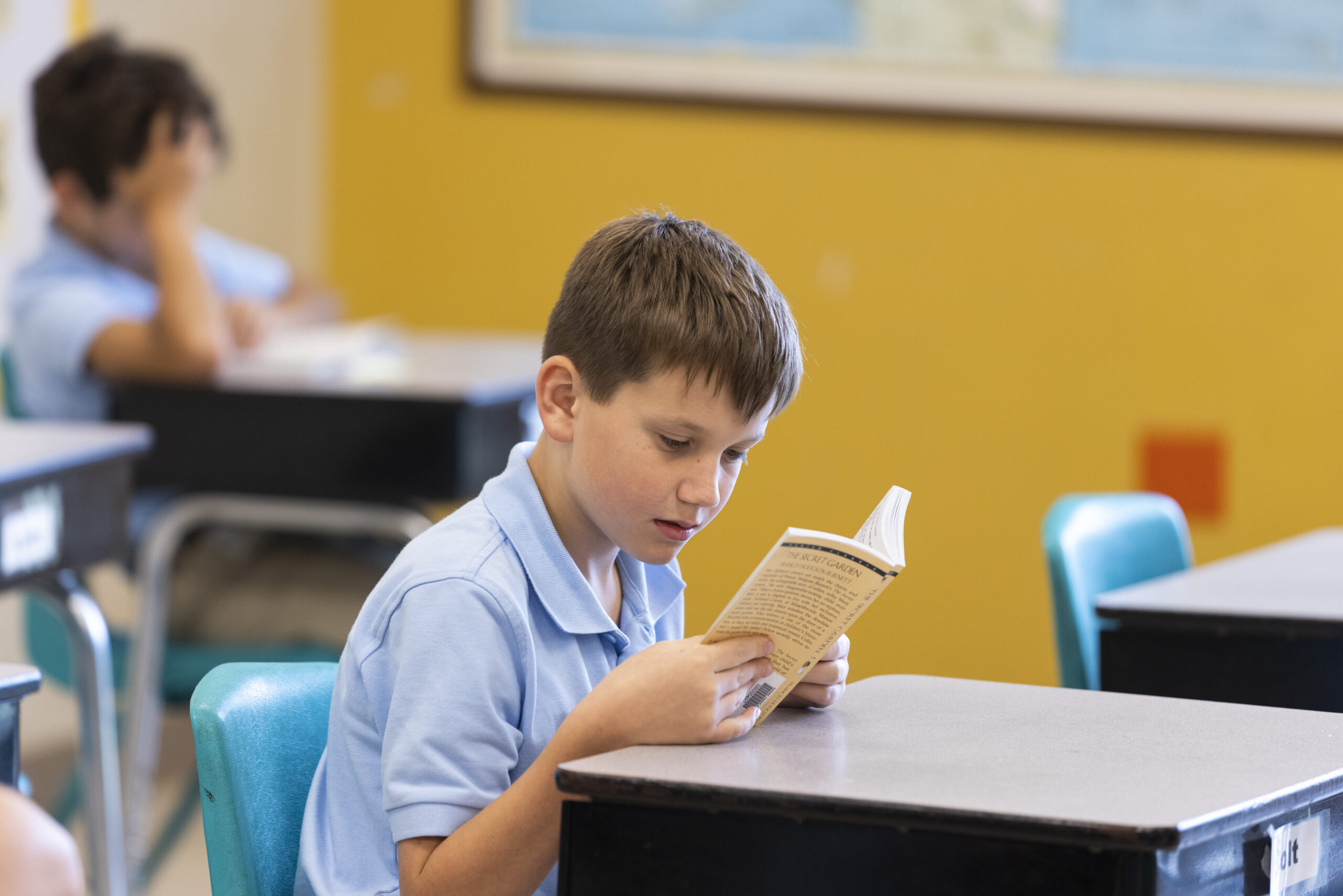“Literacy Essentials” provides students with the tools to be able to spell and read hundreds of words. We want to set our students up for a successful, lifelong pursuit of reading for both pleasure and enlightenment, and this is the best way to place them on that path.

I was a little girl when I first knew I wanted to teach. There were many reasons why, but the main reason was the desire to show children how to read. I remember struggling with reading as a kid when I first started. Yet while it was difficult, once I could read, I recall thinking it was magical. I knew then that one day, I wanted to teach children how to read and experience this for themselves.
More than a decade later, I ended up following my dream and became a kindergarten teacher. Along the way, I learned many different ways of teaching children how to spell and read. I also used these methods as a teacher. Still, something didn’t feel quite right about the methods I was using. Relying on “sight words” and the memorization of hundreds of words didn’t work well in my opinion. This all changed in 2014 when I started teaching explicit phonics.
I was fortunate enough to be offered a job teaching kindergarten at a classical school that uses explicit phonics to teach children how to spell and read. I have been teaching at the same school since 2014 and have seen the value of not only a classical education, but using the explicit phonics “Literacy Essentials.” This curriculum includes 72 phonograms that make up the English language and spelling rules that help students learn how to spell and read.
Every fall, 24 kindergarteners enter my classroom. They’re excited to be at school, but they’re even more excited to learn how to read. We start by learning how to go to school, and how to look ready to write, we learn the first 26 phonograms, and then we blend them to spell and read. We continue to learn more phonograms, as well as English rules that help students make sense of the English language. They fill their toolbox with phonograms and rules to help them spell and read any word I give them. Though they start the year writing simple words, they are writing complex sentences by the time summer comes around. It’s been a privilege to witness hundreds of students demonstrate what they are capable of doing at such a young age.
A few years ago, I had a student with a learning disability in my classroom. Bobby was an incredibly hard-working student. And yet, he struggled academically despite his genuine efforts. He was a student that I knew would have a more difficult time learning how to spell and read. I was thrilled that Bobby was in my classroom as I knew the best way for him to learn would be through “Literacy Essentials.”
The beauty of using this curriculum is that it is designed for any child. I’ve seen countless students like Bobby, who are limited by a disability, be able to spell and read by the end of their kindergarten year. Programs that use “whole language” require students to rely on the memorization of hundreds of words. This is often an impossible task for a student who struggles. Instead, “Literacy Essentials” provides students with the tools to be able to spell and read hundreds of words. We want to set our students up for a successful, lifelong pursuit of reading for both pleasure and enlightenment, and this is the best way to place them on that path.
Bobby sat in the front row of my classroom and learned alongside the rest of the class. While it took him longer than his peers to fully understand each concept, the repetition built into the program helped Bobby immensely. He may not have understood an English rule the first time, but with repetition, he got it. Bobby started kindergarten barely able to write his full name. By the end of the year, he could read and write sentences.
My own son just completed kindergarten and has learned how to spell and read with “Literacy Essentials.” He started kindergarten knowing only some sounds of letters and how to write his name. He is now reading words with complex rules, such as “silent final e” and “vowel pairs.” He is reading books fluently. I am a proud parent watching my son confidently read as well as write sentences for his stories. As both a teacher and parent, I am fortunate to get to witness the progress students make in kindergarten through “Literacy Essentials.” I can’t wait to hear the stories of all those who experience it in the future.
Lyndsey Rariden is a kindergarten teacher at Founders Classical Academy of Leander.

